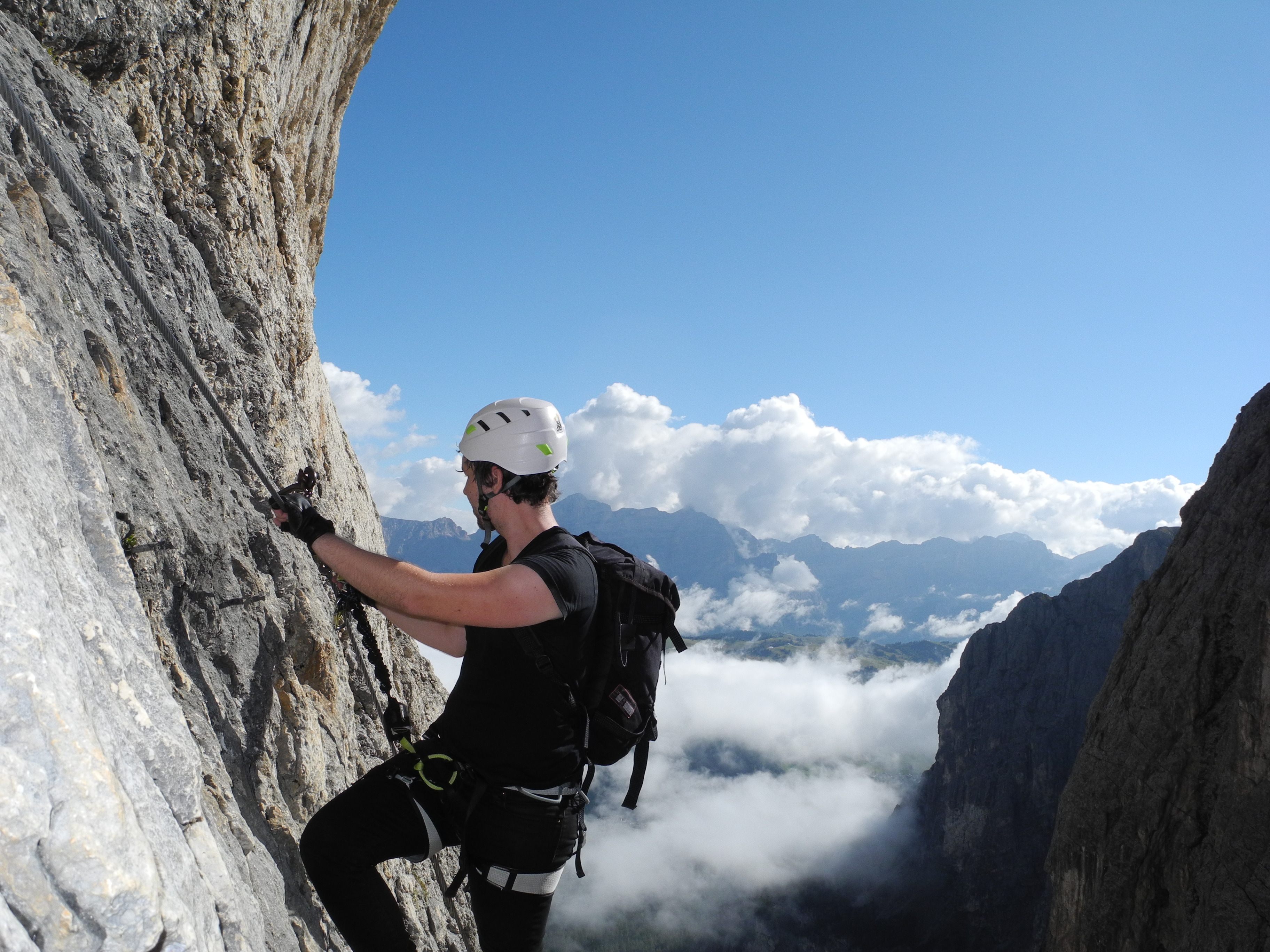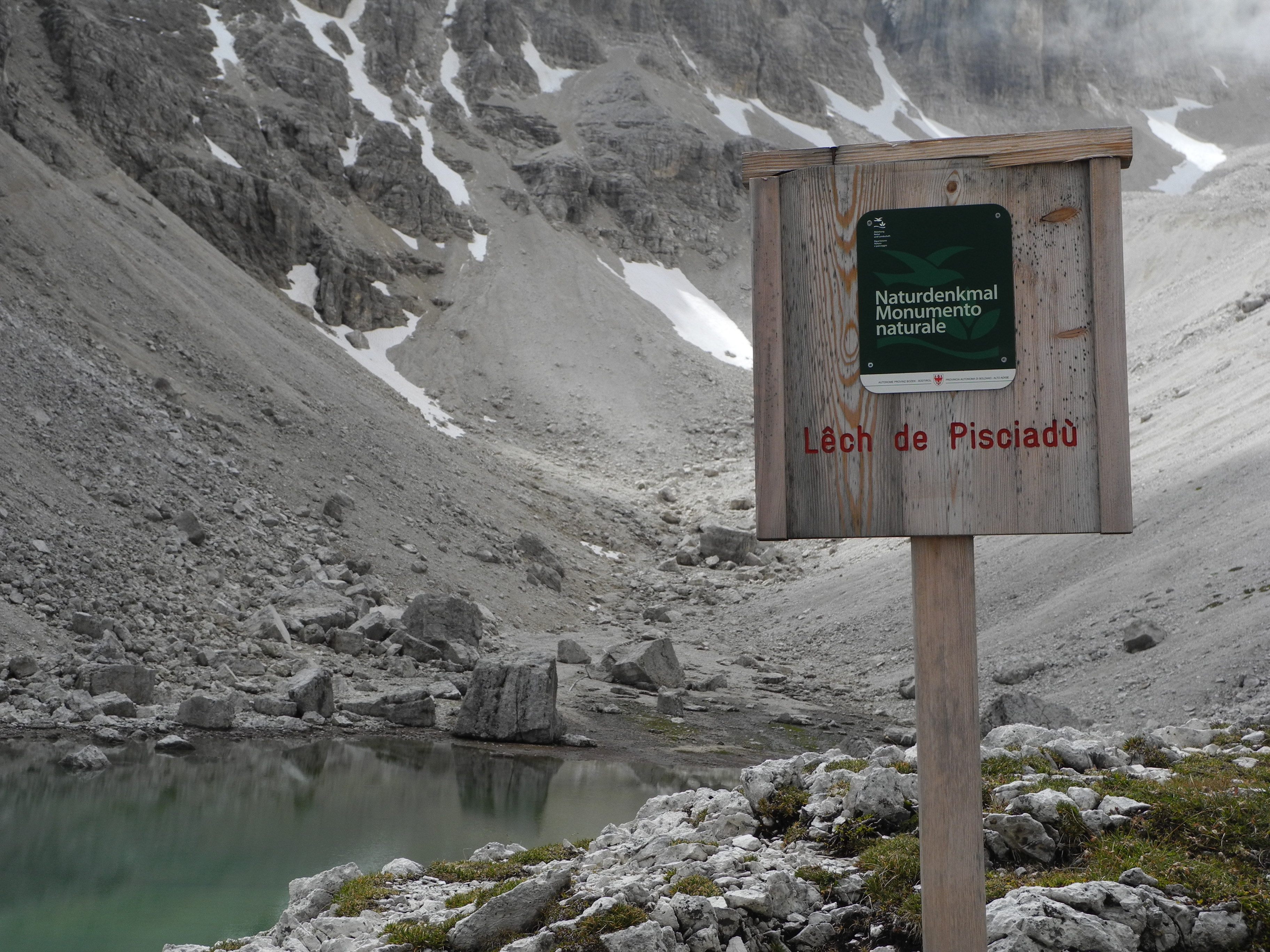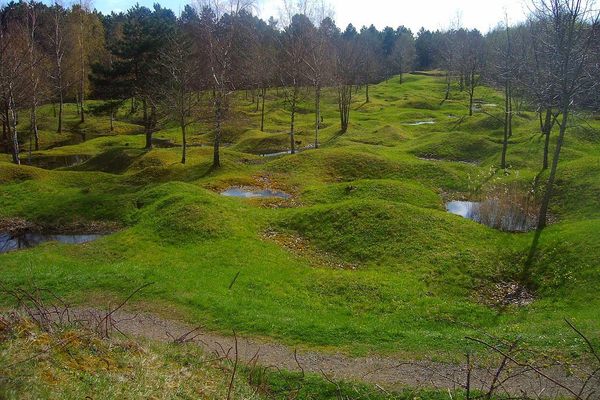100 Wonders: The Iron Road
A climbing route in the mountains of Italy’s Dolomites, built for soldiers during World War I.
Near Alta Badia, in the Italian Dolomites, the horrendous violence of WWI has left behind a kind of frozen museum of the mountains. To visit, you take what’s called “The Iron Road.”
Mountains are a pain in the ass. Today most people in the West think of them as beautiful but that’s in part because most of us don’t have to traverse them on a regular basis—and when we do, we travel by the roads carved through them. In places like the Alps, where daily traversing of mountainsides was necessary, protected paths with ladders were set up to connect villages and their grazing pastures.
For the most part throughout history, people didn’t climb mountains unless they absolutely had to. In ancient times mountains were often seen as the seat of the gods and the idea of going up one for fun would have seemed not just foolish, but blasphemous. You had to be Moses to climb Horeb of Sinai and stand face to face with God. Climbing mountains was not for mere mortals.
While the Greeks, Romans and Carthaginians occasionally climbed mountains for practical purposes such as war (looking at you ,Hannibal) they generally weren’t climbing them just for fun. As mountain climbing became as a sport in the mid 1800s, so too did the creation of fixed climbing routes, or Via Ferrata. These were metal rungs stuck into the mountainside like a ladder. But it would be the coming carnage of the First World War that fixed the Via Ferrata, or “iron roads,” into history.

Italy declared war on the Austro-Hungarian Empire in May 1915. The countries’ borders were also the natural borders of the Alps and soldiers rushed up each side of the mountains. This particular theater of war became the “Dolomite front” often referred to as “the White War,” named for the icy, snowy conditions the soldiers fought in.
The Italians already had specialist mountain troops: the Alpini, famous for their feathered caps. The Austrians had to create an equivalent force they called the Kaiserschützen. These mountain soldiers fought at altitudes of up to 12,000 feet in weather as cold as -22°F. Digging in for the long fight, the Austrian Corps of Engineers built an entire “ice city” in the mountains, made up of dormitories, storerooms, ammunition stockpiles, and connecting tunnels. Both sides established an elaborate system of iron rungs and fixed ropes, set up to help get supplies to the soldiers.
But it’s hard to fight a war on a mountain. When each side would try to shoot at the other, their opponents could just hide under a ledge. Mortars and other explosives were difficult to aim. And the flying bullets and projectiles triggered avalanches, which competed with the cold and exposure in a spirited attempt to kill everyone.
The solution was to dig. Both the Austrians and the Italians tunneled. In addition to creating bunkers and lookout positions, they dug shafts beneath enemy shelters, to be filled with dynamite and detonated. From 1915 to 1917, five huge explosions rocked the mountain of Lagazuoi, leaving behind a wreckage of barracks, bodies, and rubble and changing the face of the mountain itself.

In early 1916, the Italians decided to try to dynamite Austria off the top of the mountain. They spent three months digging. Italy’s tunnel was by then about 160 feet long and ended 12 feet below the Austrian bunker. In 1916, Austrian troops could hear the Italians beneath their feet, tunneling away, getting closer and closer. Despite the knowledge that they could be blown up at any moment, the Austrian soldiers were ordered to stay.
On April 14, 1916, the noise stopped.
There was nothing to do but wait—it became a matter of which Austrian troops would be on duty when the Italians detonated the explosives. When they finally went off, a hundred men were blown off the side of the mountain, and the top 90 feet of the mountain top was blown off. By the time the Dolamite front was abandoned in late 1917, some 150,000 men had died in the mountains.
Today in the area, there is still evidence of the violence. The borders of the region were shaped by the war and the remains of the carnage still litter the mountains. The bodies of over 80 soldiers who were killed in the White War have been found in recent decades. More are being revealed as climate change brings warmer temperatures, causing the mountain’s ice and snow to melt.
Around Alta Badia you can visit the remains of these WWI tunnels and bunkers, and climb any number of the pathways made by WWI soldiers known as the Via Ferreta. While some are original to the war, others have been created specifically for their beautiful views.
































Follow us on Twitter to get the latest on the world's hidden wonders.
Like us on Facebook to get the latest on the world's hidden wonders.
Follow us on Twitter Like us on Facebook